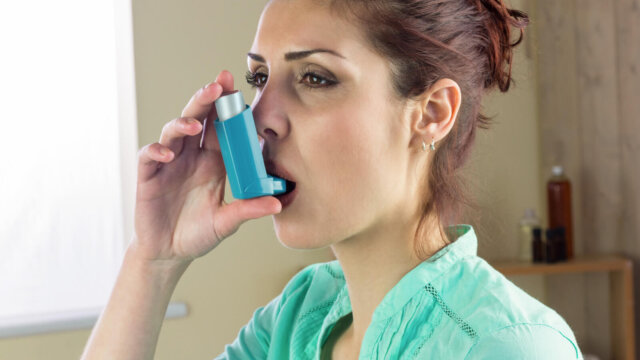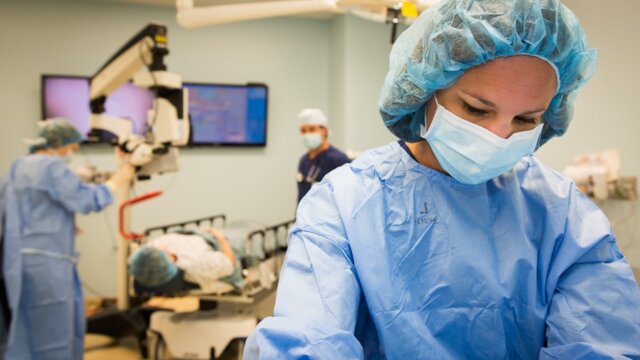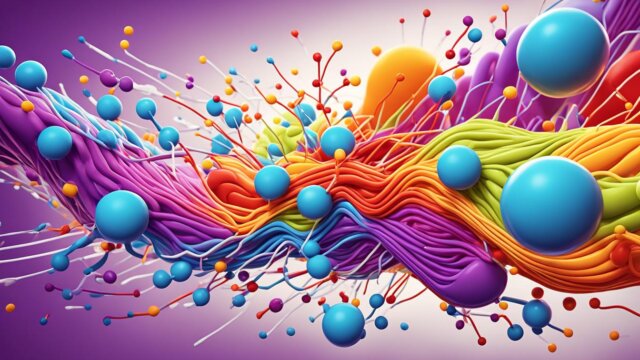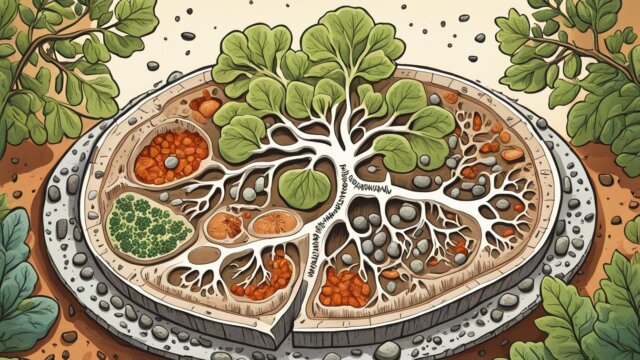FTC disclaimer: This post may contains affiliate links and we will be compensated if you click on a link and make a purchase.
Did you know that 60% of newborns get jaundice, showing signs within 48 hours of birth? Jaundice makes the skin, mucous membranes, and eyes look yellow. It happens when the body can’t handle bilirubin, a waste product from old red blood cells. This condition isn’t a disease but points to a problem that makes too much bilirubin or stops the liver from getting rid of it.
Key Takeaways
- Jaundice is a common condition caused by the body’s inability to properly process bilirubin, a natural waste product.
- Bilirubin levels should be checked when infants are between 3-5 days old, as this is usually when they are at their highest.
- Normal bilirubin levels are typically less than 1 milligram per deciliter (mg/dl), but levels reaching approximately 3 mg/dl indicate jaundice.
- Underlying conditions like thyroid problems, blood group incompatibility, and certain infections can cause jaundice in newborns.
- Prompt treatment is crucial to prevent complications like kernicterus, a type of brain damage caused by high bilirubin levels.
Understanding Jaundice
What is Jaundice?
Jaundice makes the skin, mucous membranes, and the whites of the eyes look yellow. This happens when there’s too much bilirubin in the blood, known as hyperbilirubinemia. Bilirubin is a waste product the liver usually gets rid of. But if the liver can’t process it fast enough, bilirubin builds up, causing jaundice.
Causes of Jaundice in Adults
In adults, jaundice often means something is wrong with the liver, bile ducts, or red blood cells. Common causes include viral hepatitis, cirrhosis, gallstones, pancreatic cancer, and some medicines. Hepatitis can cause jaundice and can be either short-term or long-term. Drinking a lot of alcohol over 8 to 10 years can also lead to jaundice.
Other things like pancreatic cancer, liver diseases, blocked bile ducts, certain medicines, blood clots, and hemolytic anemias can cause jaundice too. In adults, jaundice is not as common as in babies but it’s still important to notice it. Seeing a doctor quickly is key to fixing the problem and staying healthy.
Types of Jaundice
Jaundice has four main types, based on where bilirubin builds up in the body. Knowing these types helps with diagnosis and treatment.
Prehepatic Jaundice
Prehepatic jaundice happens when the body breaks down red blood cells too fast. This makes too much bilirubin in the blood. It’s often seen in people with malaria, sickle cell anemia, or thalassemia.
Symptoms include belly pain, fever, losing weight, itching, dark urine, and pale poop. Things that might increase the risk are drug use, family history, and traveling to places with malaria.
To diagnose it, doctors might do blood tests, imaging tests, or HIDA scans. Treatment depends on the cause and can be medicines, blood transfusions, surgery, or supplements.
Hepatic Jaundice
Hepatic jaundice means the liver isn’t working right, so it can’t filter bilirubin well. It can be caused by liver damage, viral hepatitis, or liver cancer.
Symptoms are losing appetite, itching, feeling weak, swelling, dark urine, and pale poop. Risk factors include drug use, too much alcohol, certain meds, and past liver infections.
Doctors use blood tests, imaging, and sometimes endoscopy to diagnose it. Treatment focuses on the cause and might include lifestyle changes, meds, vaccines, or surgery.
Posthepatic Jaundice
Posthepatic jaundice is caused by blockages that stop bilirubin from draining. Gallstones or cancer can cause it.
Symptoms are nausea, vomiting, dark urine, pale poop, belly pain, itching, and fever. Some people might be more at risk because of their health or family history.
Obstructive Jaundice
Obstructive jaundice is a type of posthepatic jaundice from a bile duct blockage. Gallstones or tumors can cause it.
Symptoms are like posthepatic jaundice, with belly pain, nausea, vomiting, and changes in stool and urine color. Doctors use tests like ultrasound or MRCP to diagnose it.
Knowing the type of jaundice is key to the right treatment. Doctors use history, exams, and tests to figure it out.
Symptoms of Jaundice
Jaundice is known for making the skin, mucous membranes, and the whites of the eyes turn yellow. This happens because bilirubin, a yellow-orange pigment, builds up in the body. People with jaundice may also notice other signs, such as:
- Itching skin
- Dark-colored urine
- Pale or clay-colored stools
- Loss of appetite and unintentional weight loss
- Fever
- Mental changes such as tiredness or confusion
- Abdominal pain
In babies, jaundice starts at the head and moves down. It’s key to know that jaundice might be harder to see on darker skin, but the eyes will still turn yellow.
Jaundice can mean there’s a problem with the liver, gallbladder, or pancreas. Knowing the symptoms and what might cause them is key to getting the right help and treatment.
“Jaundice is often a sign of a problem with the liver, gallbladder, or pancreas. Infections, most commonly viral, are a common cause of jaundice.”
Finding out what’s causing jaundice is very important. The treatment and how well someone will do can change a lot based on the cause. Doctors will need to do tests like blood work and imaging to figure out what’s going on and how to treat it.
Risk Factors for Jaundice
Jaundice can happen to anyone, but some things make it more likely. Knowing these things is key to stopping and handling jaundice well.
Alcohol Consumption
Drinking a lot of alcohol over time can cause liver problems. This includes things like alcoholic hepatitis and cirrhosis. These issues are big risks for getting jaundice.
Drinking too much alcohol hurts the liver. It makes it hard for the liver to break down bilirubin. This can lead to jaundice because bilirubin builds up.
Viral Hepatitis
Viral hepatitis, like hepatitis A, B, C, D, and E, often causes jaundice. These viruses make the liver inflamed and damaged. This messes up the liver’s work and makes bilirubin build up in the body.
Getting these viruses diagnosed and treated quickly is key. It helps stop jaundice and its bad effects.
Other Liver Diseases
Other liver problems, like cirrhosis and nonalcoholic fatty liver disease, also raise jaundice risk. These issues can mess up the liver’s bilirubin processing. This leads to jaundice.
Jaundice is more common in people in their 40s and 50s. This is because liver diseases get more common with age. Knowing these risks helps people take steps to avoid or manage jaundice.

Diagnosing Jaundice
A healthcare provider starts by doing a detailed physical check-up to find out why someone has jaundice. They look at the skin and the whites of the eyes for yellowing. Blood tests are then done to check bilirubin levels and how well the liver is working.
If someone has jaundice, their bilirubin level will be too high. More blood tests might be done. This includes a hepatitis panel, liver enzyme tests, and a complete blood count. These tests help find out what’s causing the jaundice.
Imaging Tests
Sometimes, imaging tests like ultrasound, CT scan, or MRI are used. They check for blockages in the bile ducts or liver disease signs. These tests help figure out why someone has jaundice.
For serious or ongoing jaundice, a liver biopsy might be done. This is a small procedure that takes a liver tissue sample for tests.
Quick and correct diagnosis is crucial for treating jaundice well. By using physical exams, blood tests, and imaging when needed, doctors can find the cause. Then, they can make a good treatment plan.
Treatment Options for Jaundice
Treating jaundice means finding out why bilirubin builds up. For adults, this could mean taking medicine for viral hepatitis, having surgery to remove gallstones, or other treatments based on the condition. It’s also key to rest, drink plenty of water, and avoid certain drugs and alcohol.
Treating the Underlying Cause
The main goal of treating jaundice is to fix the root cause. This might mean using medicine, changing your lifestyle, and keeping an eye on bilirubin levels. By doing this, people can feel better and avoid serious problems.
Phototherapy for Newborn Jaundice
Newborns often get phototherapy for jaundice. This uses special light to break down bilirubin. Most of the time, jaundice in newborns goes away on its own in 10 to 14 days. But if phototherapy is needed, it usually works well to lower bilirubin levels.
If a baby’s jaundice is very bad or doesn’t get better with phototherapy, they might need an exchange transfusion. This is when the baby gets new blood to lower bilirubin. Sometimes, doctors use intravenous immunoglobulin (IVIG) for rhesus disease jaundice if phototherapy isn’t enough.
It’s very important to watch bilirubin levels and see if treatments are working in serious cases of jaundice. By finding and treating the cause and using the right treatments, doctors can help people get better from jaundice and stop it from getting worse.
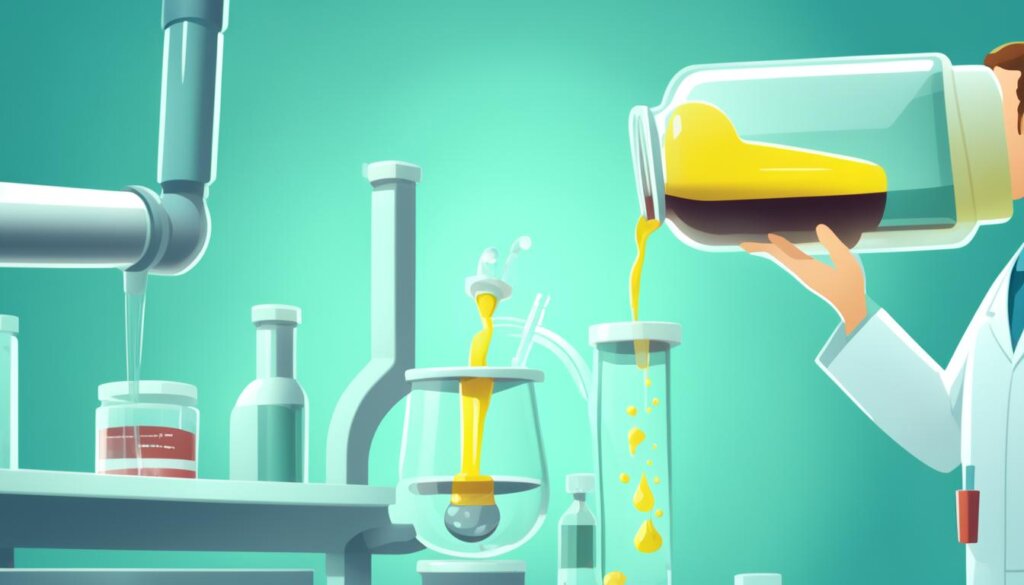
Jaundice in Newborns
Jaundice is a common issue in newborns, affecting about 60% of full-term and 80% of preterm babies in the first week after birth. Newborns get jaundice because their red blood cells break down faster, making more bilirubin. Their livers are also not fully developed, making it harder to remove bilirubin.
Causes of Newborn Jaundice
Several things can cause jaundice in newborns. The most common reason is physiologic jaundice, happening in 75% of cases. Other causes include blood group incompatibilities and issues with breaking down red blood cells. Breastfed babies, especially those not eating well, and preterm babies face a higher risk.
Treating Newborn Jaundice
Most babies with jaundice don’t need treatment. Their livers get better at removing bilirubin by the time they are 2 weeks old. But, if bilirubin levels are too high, phototherapy or exchange transfusion may be needed. These treatments usually work well, and babies can go home after a few days.
“Failure to identify and treat pathologic jaundice may result in bilirubin encephalopathy and associated neurological sequelae.”
It’s important to watch for jaundice in newborns and get help if it doesn’t go away or gets worse. Catching it early and treating it can prevent serious problems and help the baby start healthy.
Preventing Jaundice
Jaundice can come from many things, but you can lower your risk. By knowing what causes it and taking steps to prevent it, you can help keep yourself healthy.
Lifestyle Changes
Changing your lifestyle can help prevent jaundice. Eat healthy, drink lots of water, and don’t drink too much alcohol. Eating foods like fruits, veggies, and whole grains helps your liver work right. Drinking enough water helps get rid of bilirubin from your body.
Vaccinations
Some vaccines can help stop jaundice. For example, the hepatitis A and B vaccines protect against viruses that can cause jaundice. Talking to your doctor about vaccines and keeping up with shots can lower your risk of jaundice.

There’s no sure way to stop jaundice, but healthy living and vaccines can help. By eating right and getting your shots, you can keep your body healthy.
Complications of Untreated Jaundice
Jaundice is common in babies, affecting up to 60% of full-term and 80% of premature babies in their first week. Mild cases might go away on their own, but seeing a doctor is key if it doesn’t get better or gets worse. Not treating jaundice can cause serious and dangerous problems.
One big risk is kernicterus, a rare but serious brain damage from jaundice. This happens when bilirubin, the jaundice pigment, builds up in the brain. It can cause permanent brain damage, leading to issues like cerebral palsy, hearing loss, and thinking problems.
Untreated jaundice can also make liver, bile duct, or blood problems worse, leading to serious issues like liver failure, bleeding, and organ damage. Adults with jaundice face a higher risk because it might mean a serious health issue.
It’s important to catch and treat jaundice early to avoid these serious problems. Hospitals check bilirubin levels in newborns before they go home and follow up within 2-3 days, especially for late preterm or early term babies. If jaundice isn’t treated, it can cause permanent harm, showing why quick medical help is crucial.
“Persistently elevated levels of bilirubin that are not treated can result in permanent and long-lasting brain damage called kernicterus.”
Complication | Description | Risk Factors |
|---|---|---|
Kernicterus | Permanent brain damage caused by high bilirubin levels | Severely elevated bilirubin levels, lack of treatment |
Liver Failure | Inability of the liver to function properly, leading to organ damage | Underlying liver disease, worsening of condition due to untreated jaundice |
Bleeding | Increased risk of uncontrolled bleeding due to liver dysfunction | Impaired blood clotting caused by liver damage |
Organ Damage | Damage to other vital organs, such as the kidneys or heart, due to untreated jaundice | Severe and prolonged jaundice, failure to address underlying cause |
Jaundice and Liver Function Tests
Jaundice makes your skin and eyes look yellow. It’s linked to how well your liver works and bilirubin levels. Liver function tests are key in finding out if you have jaundice. They help doctors understand what’s going on and how to help you.
Bilirubin Levels
Bilirubin comes from breaking down old red blood cells. A healthy liver gets rid of most bilirubin. But if the liver gets damaged, bilirubin builds up and causes jaundice.
Blood tests check bilirubin levels. High levels can mean liver problems, blocked bile ducts, or issues with breaking down red blood cells. Newborns often get jaundice because their livers aren’t fully developed. High bilirubin in babies can be dangerous and cause brain damage if not treated quickly.
Other Liver Function Tests
Tests like ALT, ALP, AST, and GGT also check on liver health. About 8% of people have high liver test results. Sometimes, these high results go away on their own after three weeks.
These tests can also tell doctors about liver diseases like certain types of liver damage. Being overweight can affect these tests, making GGT levels higher. Babies with a liver disease called biliary atresia have high GGT levels if they drink breast milk.
Together, bilirubin tests and other liver tests, along with symptoms and medical history, give a full picture of liver health. They help doctors figure out and treat liver issues and jaundice.
Living with Jaundice
If you have jaundice, focus on treating the condition that causes bilirubin buildup 1. This might mean taking medicine, having surgery, or other treatments. Meanwhile, rest, drink plenty of water, and avoid alcohol and some medicines to ease symptoms like itching and discomfort.
Jaundice happens when blood bilirubin levels go above 2.5-3 mg/dL. In adults, it can be due to many things, like problems with red blood cells, liver issues, or certain cancers.
Genetic conditions like Glucose 6-phosphate dehydrogenase deficiency can make red blood cells break down faster, causing jaundice. Liver problems like cholestasis or hepatitis can also raise bilirubin levels and lead to jaundice.
Drinking a lot of alcohol can increase the risk of liver diseases that cause jaundice. Some people with jaundice need to stay in the hospital, while others can be treated at home. The outcome depends on the cause of jaundice.
Some cases of jaundice have a good outcome and people fully recover. To help manage your symptoms, follow your doctor’s advice, take your medicines, avoid alcohol, and live healthily.
“The key to living with jaundice is to work closely with your healthcare team to address the underlying cause and manage your symptoms effectively.”
Condition | Cause of Jaundice | Treatment Approach |
|---|---|---|
Liver Disease | Impaired liver function leading to bilirubin buildup | Medications, lifestyle changes, or in some cases, liver transplant |
Gallstones | Blockage of bile ducts causing bilirubin to back up | Surgical removal of gallbladder or gallstone extraction |
Hemolytic Anemia | Accelerated breakdown of red blood cells | Treatment of the underlying condition causing the anemia |
Understanding your jaundice’s causes and working with your doctor can help you manage symptoms and get better. Remember, staying informed, following your treatment, and living healthily are key to dealing with jaundice.
When to See a Doctor
If you notice jaundice, see a doctor right away, even if it seems mild. It could mean a serious issue, so quick medical help is key. It’s important to get checked for symptoms like yellow skin, belly pain, and more.
Jaundice can come from many liver and metabolic diseases. If not treated, it can cause serious problems like brain damage, liver failure, and even death. Things like hepatitis, liver disease, and infections can raise your risk of getting jaundice.
To diagnose jaundice, doctors usually do a blood test to check bilirubin levels. Gastroenterologists are great at finding and treating jaundice. Jaundice can lead to serious issues like kernicterus, hepatitis, itching, losing weight, and belly pain.
Newborns often get jaundice in the first few days as their liver adjusts. Breastfed babies are more likely to get it than those on formula. In the first 24 hours, they only get a little milk. Babies sent home early should see a doctor within two days for check-ups.
Sometimes, eating certain foods or using some products can cause severe jaundice. Babies need a bilirubin test before going home to catch high levels early. High levels might mean they need special care in the ICU and could need a blood transfusion.
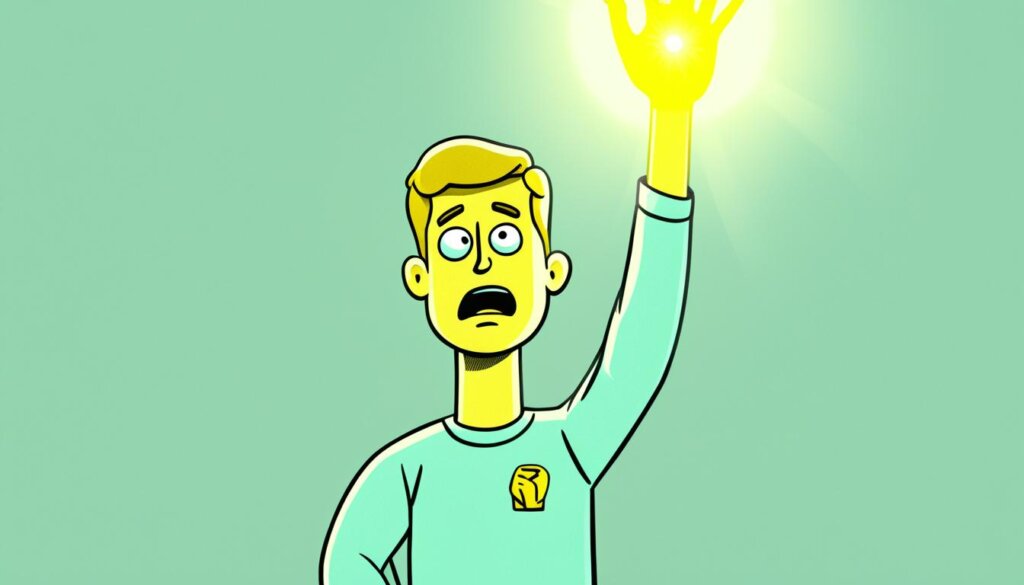
Conclusion
Jaundice makes your skin, mucous membranes, and the whites of your eyes look yellow. It happens when your body has too much bilirubin. This condition is not a disease but a sign of another health issue, often linked to the liver or bile ducts.
It’s important to find and treat the cause of jaundice quickly. Tests like blood tests and scans help figure out why you have it.
Learning about jaundice overview and key takeaways about jaundice helps you act fast. If it’s from a virus, liver disease, or something else, seeing a doctor and following their advice can make you feel better.
FAQ
What is jaundice?
Jaundice makes your skin, mucous membranes, and the whites of your eyes turn yellow. This happens when your body can’t process bilirubin right.
What causes jaundice in adults?
Adults get jaundice from things like viral hepatitis, cirrhosis, gallstones, pancreatic cancer, and some medicines.
What are the different types of jaundice?
There are four main types of jaundice. They are named based on where bilirubin builds up in the body.
What are the symptoms of jaundice?
Jaundice makes your skin, mucous membranes, and eye whites turn yellow. You might also feel itchy, have dark urine, pale stools, lose your appetite, lose weight, get a fever, feel mentally different, or have belly pain.
What are the risk factors for developing jaundice?
Drinking a lot of alcohol over time, getting viral hepatitis, and having liver diseases like cirrhosis or nonalcoholic fatty liver disease can increase your risk.
How is jaundice diagnosed?
Doctors use a physical check-up, blood tests to check bilirubin and liver function, and sometimes imaging tests or a liver biopsy to diagnose jaundice.
How is jaundice treated?
Treatment depends on the cause, like giving medicine for viral hepatitis or surgery for gallstones. You also get supportive care.
What causes jaundice in newborns?
Newborns often get jaundice because their red blood cells break down fast and their liver isn’t fully developed to process bilirubin.
How can jaundice be prevented?
You can lower your risk by not drinking too much alcohol and taking care of any health issues you have.
What are the potential complications of untreated jaundice?
If jaundice is not treated, it can cause serious problems like brain damage in babies or liver failure, bleeding, and organ damage in adults.
How are bilirubin levels used to diagnose jaundice?
High levels of unconjugated bilirubin mean prehepatic jaundice. High levels of conjugated bilirubin suggest hepatic or posthepatic jaundice.
When should someone seek medical attention for jaundice?
See a doctor right away if you have jaundice. It could mean there’s a serious health issue.


